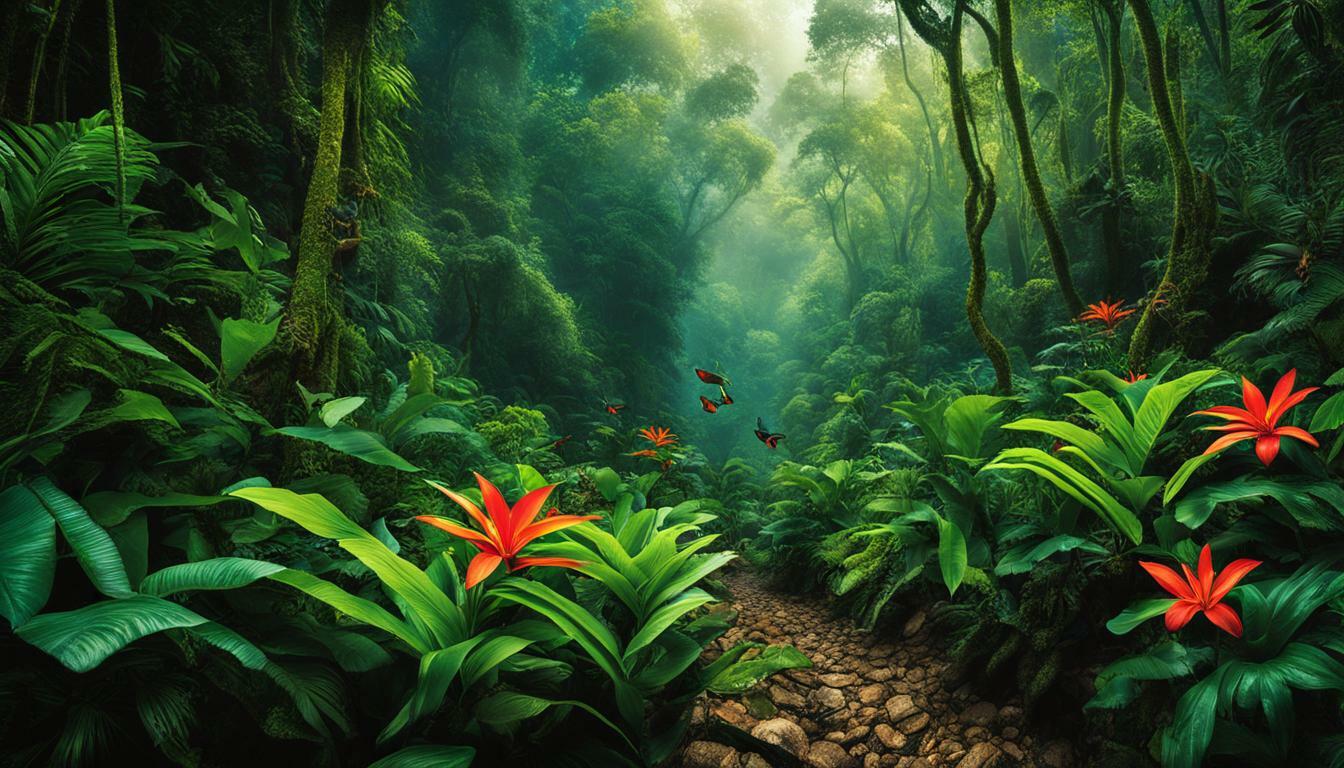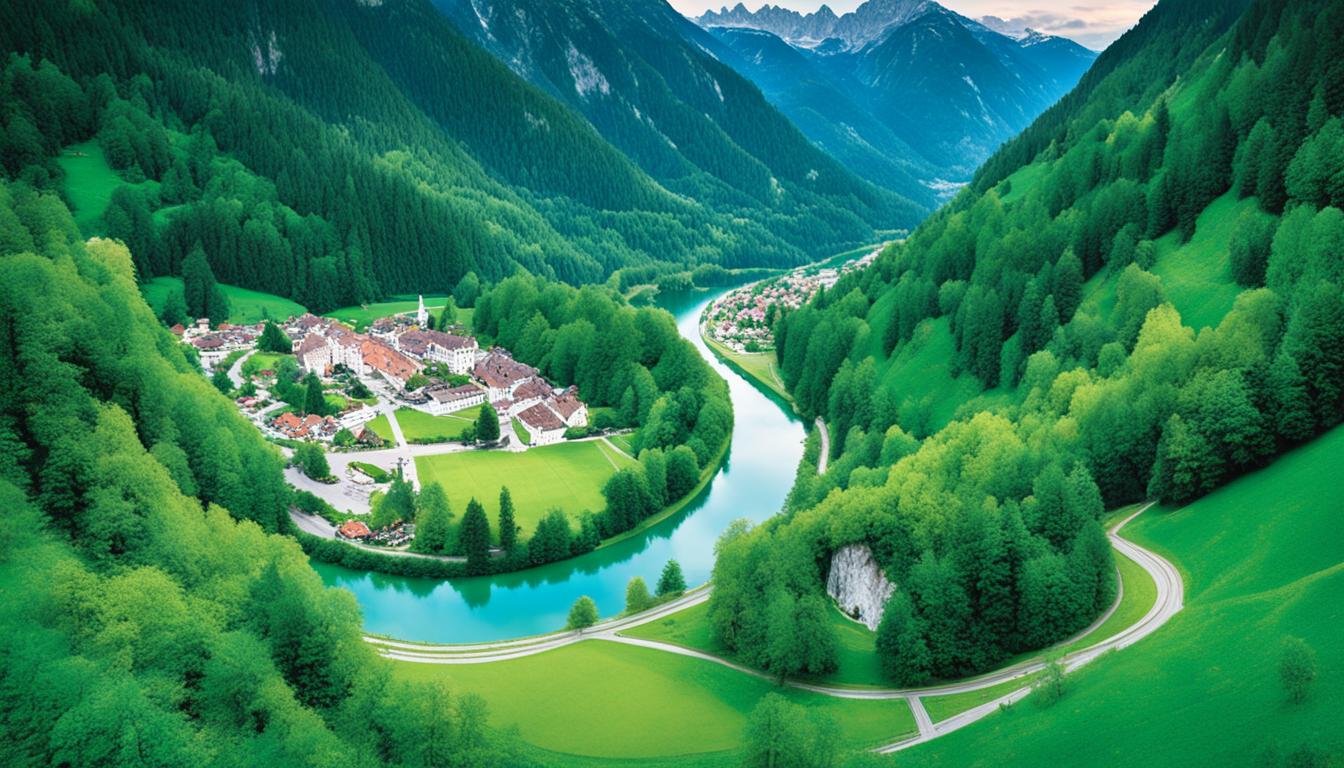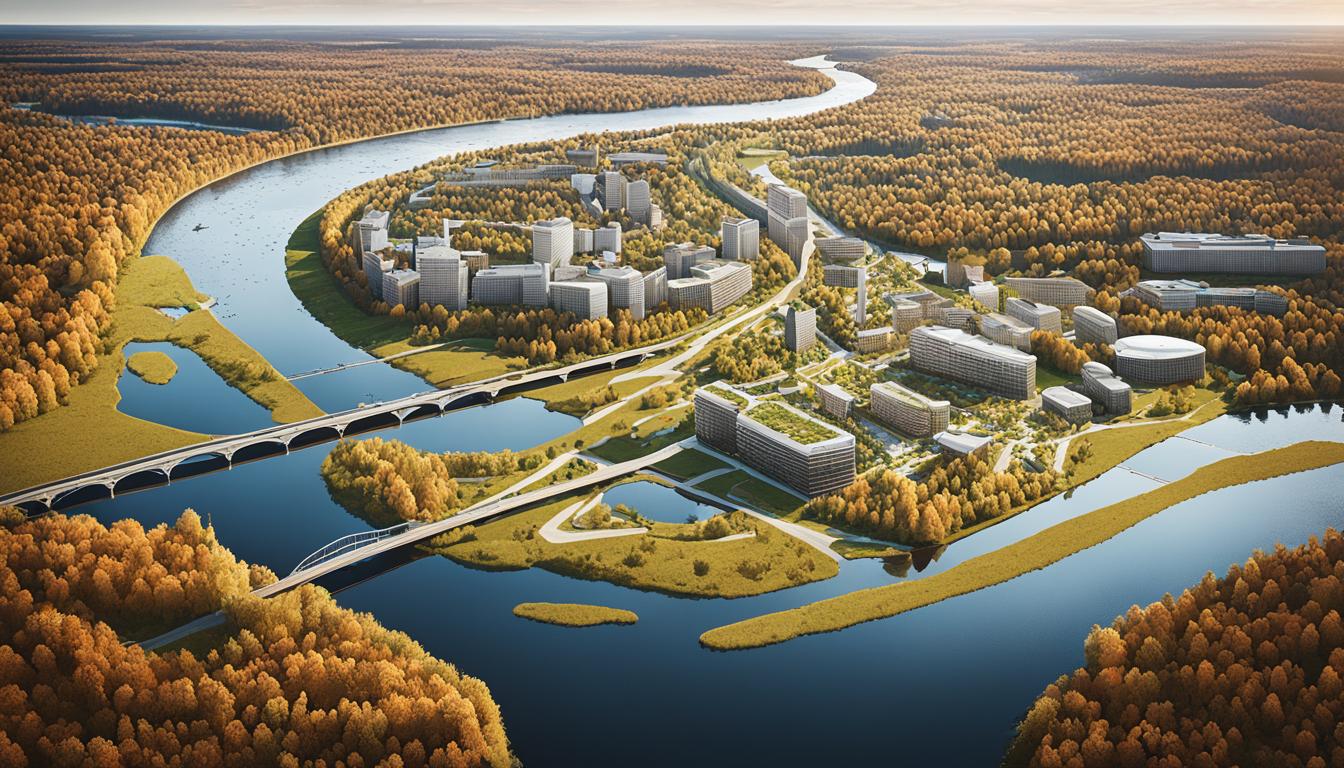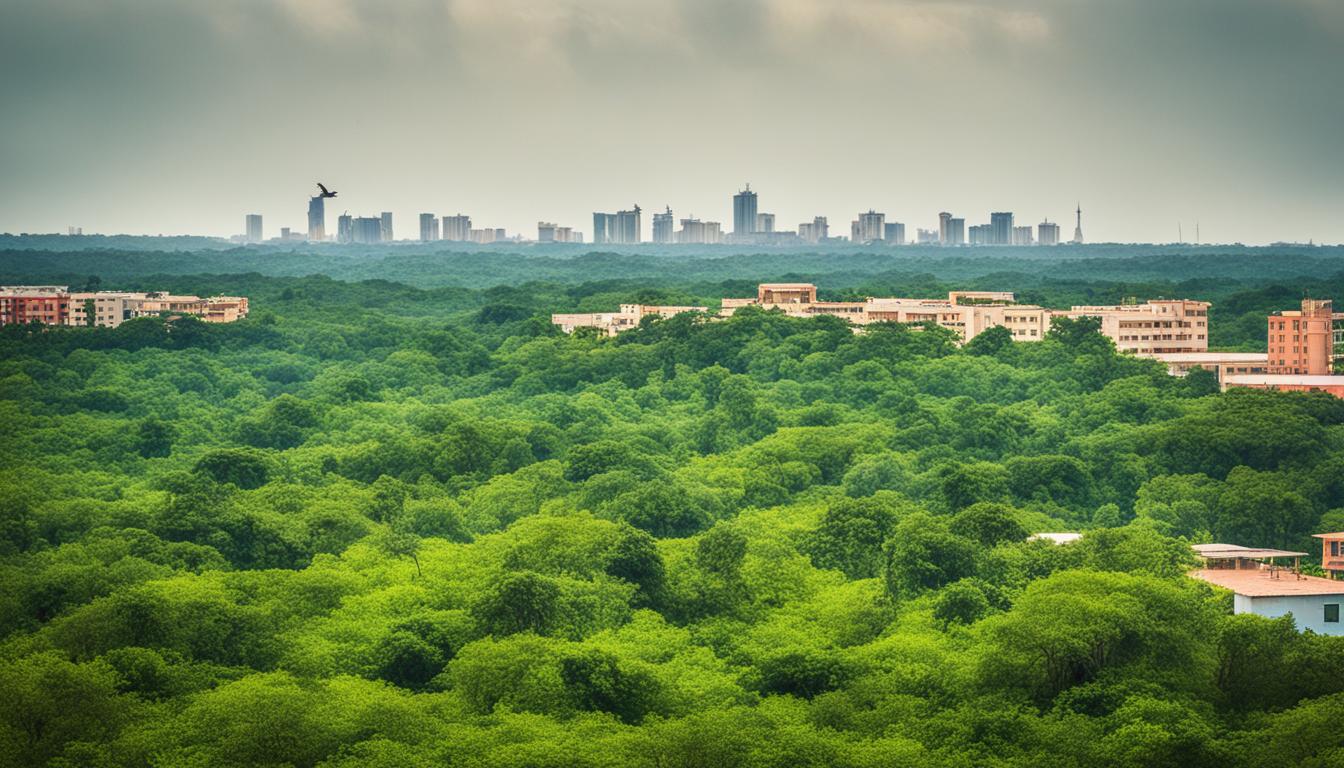Belarus Biodiversity: Animal and Plant Species and What Is Under Threat
Belarus is home to a diverse range of animal and plant species, but the biodiversity of the country is under threat from various factors. The unique natural complexes and ecosystems found in Belarus make up 65.8% of its territory, including two geo-botanical regions – the Eurasian taiga and European deciduous broad-leaved zones. The country has seen an increase in total forest cover over the years, but boreal areas are decreasing due to a warming climate, leading to a shift towards steppe and forest-steppe zones.
Belarus boasts an impressive plant diversity, with approximately 12,000 plant species, including 7,000 species of fungi and 2,000 species of algae. Vascular plants make up 1,638 species, with over 1,500 herbal species. In terms of fauna, Belarus is home to 46 indigenous fish species out of a total of 63, as well as 467 species of vertebrates and over 30,000 species of invertebrates. While there is a lack of endemic terrestrial faunal species, there are some relict species from the Ice Age.
However, the biodiversity in Belarus faces numerous threats. Climate change is one of the major pressures, leading to habitat reduction for boreal plant and animal species, population decrease of wild plants and animals in inundated, riverside, and wetland ecosystems, and the emergence of bird species from southern origins, intensifying inter-specific competition near water sources. Invasive species, such as the American mink, giant hogweed, and Canadian golden rod, also pose a significant threat to Belarusian fauna by outcompeting native species.
The conservation efforts in Belarus aim to protect and preserve the country’s biodiversity. The establishment of protected areas, which cover 7.7% of the country, plays a crucial role in safeguarding rare and endangered species. Wildlife conservation initiatives have successfully protected and even removed some species from the Red Data Book. Belarus also emphasizes sustainable development, with ongoing biodiversity research and scientific studies conducted to understand the impact of human activities on its biodiversity.
In conclusion, it is crucial to prioritize conservation efforts and sustainable development to protect Belarus biodiversity. While the country boasts a rich flora and fauna, the threats posed by climate change, invasive species, and habitat loss need to be addressed. By implementing effective conservation measures and conducting further research, Belarus can ensure the preservation of its unique and diverse animal and plant species for future generations.
Key Takeaways:
- Belarus is home to a diverse range of animal and plant species
- Biodiversity in Belarus is under threat from climate change, invasive species, and habitat loss
- The country has a rich flora and fauna, with approximately 12,000 plant species and 46 indigenous fish species
- Conservation efforts and sustainable development are crucial in protecting Belarus biodiversity
The Rich Flora and Fauna of Belarus
Belarus boasts a remarkable variety of plant and animal species, with over 12,000 plant species and a diverse range of fauna, making it a biodiversity hotspot. The country’s natural complexes and ecosystems cover 65.8% of its territory, belonging to two geo-botanical regions: the Eurasian taiga and the European deciduous broad-leaved zones. Belarus has made efforts to increase its forest cover, with a rise from 32.4% in 1966 to 38% in 2008. However, boreal areas are shrinking, and there is a shift towards more steppe and forest-steppe zones due to the effects of climate change.
In terms of plant species, Belarus is home to around 12,000 species, including 7,000 species of fungi and 2,000 species of algae, representing nearly 80% of the total flora. The country also has 1,638 species of vascular plants, with over 1,500 herbal species. When it comes to fauna, Belarus has 46 indigenous fish species out of a total of 63, as well as 467 species of vertebrates and more than 30,000 species of invertebrates. Although there is a lack of endemism for terrestrial faunal species, there are a few relict species from the Ice Age. Belarus also has 54 critically endangered plant species and 16 critically endangered fauna species.
Conservation efforts in Belarus have led to the successful protection and removal from the Red Data Book of certain animal species, such as the mute swan and aquatic warbler. The country has 47 game species and 31 commercial fish species, with an average annual fish yield of 803.06 thousand tons. However, unsustainable activities are leading to a reduction in fish stock and changes in species composition and structure. Belarus is also facing the challenge of invasive species, with over 600 species of plants and 30 species of animals invading its territory.
Table: Endangered Species in Belarus
| Category | Number of Plant Species | Number of Fauna Species |
|---|---|---|
| Critically Endangered | 54 | 16 |
“Belarus possesses about 12,000 plant species, including 7,000 and 2,000 species of fungi and algae, respectively, together representing nearly 80% of the total flora.”
The conservation and sustainable use of Belarus’ unique landscape types, such as swamps, inundated territories, forests, kame moraine, and lake complexes, are of utmost importance. One such area is Belarus Polesie, located in the southern part of the country, which is one of Europe’s most important inland water regions. Wetlands in Belarus have experienced extensive drainage in the past but have seen an increase in wetland areas due to natural re-swamping.

Climate change poses a significant threat to Belarus’ biodiversity, with a reduction in habitat for boreal plant and animal species and the emergence of competing bird species from southern regions. Invasive species, such as the American mink, giant hogweed, and Canadian golden rod, also have a negative impact on native Belarusian fauna. Other anthropogenic factors contributing to biodiversity loss include changes in land use, pollution, habitat fragmentation, and forest damage caused by pests, diseases, hurricanes, and fires.
Belarus has implemented measures to enhance the implementation of the Convention on Biological Diversity, with a focus on improved legislation, a network of protected areas, information management systems, and international cooperation. The country’s strategic aims for biodiversity conservation include preventing a decrease in species populations and diversity, achieving sustainable use of biological diversity, and strengthening compliance with the Aichi Biodiversity Targets.
Threats to Belarus Biodiversity
The biodiversity in Belarus is facing multiple threats, including habitat loss, climate change, and the impact of human activities on ecosystems. These threats have significant implications for the unique animal and plant species found in the country, as well as the overall health of the environment.
One of the main challenges to biodiversity in Belarus is habitat loss. The conversion of natural habitats for agriculture, urbanization, and infrastructure development has resulted in the destruction and fragmentation of ecosystems. This loss of habitat directly affects the survival and reproduction of many species, leading to population declines and even extinction. Additionally, the drainage of wetlands and the removal of forests have further contributed to the loss of essential habitats for numerous plant and animal species.
Climate change is another major threat to biodiversity in Belarus. Rising temperatures and altered precipitation patterns have significant impacts on the distribution and behavior of species. For instance, boreal plant and animal species, which are adapted to colder climates, may struggle to survive as their habitats shrink due to the changing climate. Moreover, climate change can disrupt important ecological processes, such as migration patterns, reproductive cycles, and predator-prey relationships, all of which are crucial for the functioning of ecosystems.
Human activities, including pollution, overexploitation of natural resources, and the introduction of invasive species, also pose a significant threat to Belarus biodiversity. Industrialization and intensive agriculture have led to increased pollution levels, which can contaminate water bodies and soil, negatively impacting the health of plants, animals, and microorganisms. Overharvesting of species for economic purposes, such as hunting and fishing, can deplete populations and disrupt ecological balance. Invasive species, both plants and animals, can outcompete native species for resources and disrupt ecosystem dynamics.
It is crucial to address these threats and implement conservation measures to protect and preserve Belarus biodiversity. Efforts should focus on habitat restoration and protection, promoting sustainable land use practices, mitigating climate change impacts, and managing invasive species. Additionally, raising awareness and engaging local communities in conservation initiatives is essential for achieving long-term success in preserving the rich biodiversity of Belarus.
| Threats | Impact |
|---|---|
| Habitat Loss | – Destruction and fragmentation of ecosystems – Loss of essential habitats for plant and animal species |
| Climate Change | – Shrinking habitats for cold-adapted species – Disruption of ecological processes – Changes in species distribution and behavior |
| Human Activities | – Pollution of water bodies and soil – Overexploitation of natural resources – Introduction of invasive species |
Key Points
- Habitat loss, climate change, and human activities are threatening Belarus biodiversity.
- Habitat loss is caused by agricultural expansion, urbanization, and infrastructure development.
- Climate change is impacting species distribution, behavior, and ecological processes.
- Human activities, including pollution and overexploitation, are causing further harm to biodiversity.
- Conservation efforts should focus on habitat restoration, sustainable land use, climate change mitigation, and managing invasive species.
“The biodiversity in Belarus is under threat from habitat loss, climate change, and human activities. These challenges require urgent action to protect and preserve the unique animal and plant species found in the country.”
Conservation Efforts in Belarus
Belarus is actively engaged in wildlife conservation and ecosystem protection, with numerous conservation projects and the establishment of protected areas across the country. The rich biodiversity of Belarus, with its diverse flora and fauna, is a valuable asset that requires careful preservation and management.
One of the key initiatives in wildlife conservation is the establishment of protected areas. These areas serve as habitats for endangered species and help to preserve the natural ecosystems of Belarus. Currently, Belarus has a network of protected areas covering 7.7% of the country, including national parks, nature reserves, and wildlife sanctuaries. These protected areas provide safe havens for a wide range of plant and animal species, ensuring their long-term survival.
Wildlife conservation projects are also crucial in Belarus. These projects focus on specific species or ecosystems, aiming to protect and restore their populations. For example, there have been successful conservation efforts for species such as the mute swan and aquatic warbler, which have been removed from the Red Data Book as a result of these projects.
The government and various organizations in Belarus are actively involved in ecosystem protection and restoration. They implement measures to prevent habitat loss, combat pollution, and regulate human activities that may impact biodiversity. Additionally, international cooperation plays a significant role in conservation efforts, with Belarus actively participating in global initiatives.
Conservation Projects in Belarus
Below is a table highlighting some of the conservation projects in Belarus:
| Project | Description |
|---|---|
| UNDP-GEF Wetlands Project | Aims to protect and restore wetland ecosystems in Belarus, focusing on the conservation of rare bird species and the sustainable use of wetland resources. |
| National Parks Development Project | Focuses on the establishment and development of national parks in Belarus to protect valuable habitats and promote sustainable tourism. |
| Belovezhskaya Pushcha Biosphere Reserve | One of the oldest nature reserves in Europe, dedicated to preserving the unique natural and cultural heritage of the ancient forest. |
| Conservation of Bison Population | Aims to restore and maintain a self-sustaining population of European bison, the heaviest land animal in Europe, through habitat restoration and captive breeding programs. |
These conservation projects, along with the efforts of local communities and individuals, contribute to the overall conservation and protection of Belarus biodiversity. They play a crucial role in ensuring the long-term sustainability of the country’s ecosystems and the survival of its unique plant and animal species.
Belarus is committed to sustainable development and biodiversity research to further enhance conservation efforts. Ongoing scientific studies focus on understanding the impact of climate change, habitat loss, and human activities on biodiversity. These studies provide valuable insights that guide conservation strategies and inform policy decisions.
It is essential to recognize the importance of conservation efforts in Belarus and the need for sustainable development practices to ensure the preservation of its rich biodiversity for future generations.

Sustainable Development and Biodiversity Research in Belarus
Sustainable development practices are crucial for the preservation of Belarus biodiversity, and ongoing research and scientific studies play a vital role in understanding and protecting the country’s rich natural heritage. Belarus is home to a diverse array of plant and animal species, with approximately 12,000 plant species, including fungi and algae, and 467 species of vertebrates. However, the biodiversity in Belarus faces numerous threats, including habitat loss, climate change, and the introduction of invasive species.
Climate change, characterized by increased temperatures and decreased precipitation, poses a significant challenge to Belarus biodiversity. The changing climate disrupts the ecological balance and alters the distribution and composition of plant and animal species. Wetlands and forests, critical habitats for many species, are particularly vulnerable. Droughts, hurricanes, and the emergence of invasive species further contribute to the degradation of ecosystems.
Scientists and researchers in Belarus are actively engaged in biodiversity research to assess the impacts of climate change and other threats on the country’s flora and fauna. These studies provide valuable insights into the changing dynamics of ecosystems and support the development of conservation strategies. Research efforts focus on monitoring species populations, studying habitat restoration techniques, and identifying effective measures to mitigate the impacts of climate change.
Conservation Projects and Initiatives
Belarus is committed to conserving its biodiversity through various projects and initiatives. The country has established a network of protected areas, comprising 7.7% of the total land area, to safeguard valuable ecosystems and rare species. These protected areas serve as important refuges for biodiversity and support sustainable development practices.
The government of Belarus has implemented measures to enhance the implementation of the Convention on Biological Diversity. The revised National Biodiversity Strategy and Action Plan focuses on improving legislation, establishing a network of protected sites, enhancing information management, and fostering international cooperation. These actions aim to prevent the decline of species populations, promote sustainable use of biological diversity, and strengthen conservation efforts.
| Challenges | Conservation Efforts |
|---|---|
| Habitat loss and degradation | Establishment of protected areas |
| Climate change | Research and monitoring of ecosystems |
| Invasive species | Implementation of invasive species management strategies |
| Industrial activity and pollution | Regulations to limit pollutants and promote sustainable practices |
The conservation efforts in Belarus are complemented by international collaboration and support from organizations like the United Nations Development Programme (UNDP) and the Global Environmental Facility (GEF). These partnerships enable the implementation of biodiversity conservation projects and promote sustainable development practices.
Overall, sustainable development practices and biodiversity research are essential components of preserving Belarus biodiversity. By understanding the threats and implementing effective conservation measures, Belarus can protect its unique plant and animal species for future generations to enjoy.

Source: United Nations Development Programme (UNDP) Belarus, Biodiversity Assessment for Belarus, and National Academy of Sciences of Belarus.
Conclusion
In conclusion, Belarus biodiversity is a valuable asset that requires ongoing conservation efforts, sustainable development practices, and scientific research to ensure its preservation for future generations. The country’s unique natural complexes and ecosystems, occupying a significant portion of its territory, support a rich variety of plant and animal species.
Belarus is home to approximately 12,000 plant species, including a diverse range of fungi and algae, representing nearly 80% of the total flora. The country also boasts a significant number of indigenous fish species and a wide array of vertebrates and invertebrates. However, the biodiversity in Belarus faces various threats, including habitat loss, climate change, and the invasion of alien species.
Efforts to protect Belarus biodiversity include the establishment of protected areas and wildlife conservation initiatives. The country’s system of specially protected areas accounts for 7.7% of the country and aims to safeguard rare and endangered species and their habitats. Additionally, sustainable development practices are being implemented to preserve the most valuable landscape types, such as wetlands and forests.
Scientific research plays a crucial role in understanding and conserving Belarus biodiversity. Ongoing studies and biodiversity research projects contribute to the knowledge and management of the country’s flora and fauna. The information gathered through these scientific endeavors helps inform conservation strategies and supports decision-making processes.
While significant progress has been made in protecting and preserving Belarus biodiversity, there is still much work to be done. The challenges posed by climate change and human activities require continuous efforts and international cooperation. By prioritizing conservation, sustainable development practices, and scientific research, Belarus can ensure the long-term survival and sustainable use of its diverse plant and animal species.
FAQ
Q: What is the biodiversity like in Belarus?
A: Belarus is home to a rich diversity of plant and animal species. It boasts about 12,000 plant species, including 7,000 species of fungi and 2,000 species of algae. There are 1,638 species of vascular plants and 46 indigenous fish species. The country also has a number of rare and endangered species, such as the aquatic warbler and the European mink.
Q: What are the main threats to Belarus biodiversity?
A: The main threats to biodiversity in Belarus include climate change, habitat loss, pollution, and the introduction of invasive species. Climate change has led to a shift in weather and climate conditions, impacting the habitats of plant and animal species. Habitat loss occurs due to factors such as deforestation and urbanization. Pollution from industrial activity also poses a threat to biodiversity. Additionally, the introduction of invasive species disrupts ecosystems and displaces native species.
Q: What conservation efforts are being undertaken in Belarus?
A: Belarus has implemented various conservation efforts to protect its biodiversity. These include the establishment of protected areas, such as national parks and nature reserves, to preserve important habitats. The country also has sustainable forestry regulations in place to ensure the responsible management of forest areas. Conservation projects have been successful in protecting and even removing some species from the endangered list.
Q: How is sustainable development linked to Belarus biodiversity?
A: Sustainable development plays a crucial role in preserving Belarus biodiversity. By promoting sustainable practices in sectors such as agriculture and tourism, the country can minimize negative impacts on ecosystems and species. Sustainable development also involves integrating biodiversity conservation into policies and plans, as well as engaging in scientific research to better understand and protect Belarus’s unique flora and fauna.
Q: What are the main challenges in protecting Belarus biodiversity?
A: The main challenges in protecting Belarus biodiversity include climate change, habitat loss, insufficient resources for conservation efforts, and the need for stronger enforcement of environmental laws. Climate change poses threats to ecosystems and species, while habitat loss continues due to human activities. Adequate funding and resources are essential for effective conservation initiatives. Strengthening enforcement of environmental laws is also crucial in addressing threats to biodiversity.







